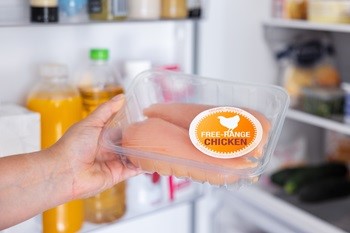The evolution of retail meat packaging from commodity-style foam trays with overwrap to case-ready branded fresh meats is currently occurring in grocery, wrote Rick Stein, VP of fresh foods at the Food Industry Association, in a blog post. Food quality, food safety, marketing, and sustainability are coming together to support environmental efforts in packaging.
In a recent report from the Association, 52 percent of meat-eaters agree that they try to do their part for the environment, such as choosing sustainable food choices, recycling, etc. and 64 percent of flexitarians agree that they try to do their part for the environment by choosing more environmentally friendly options and recycling more. These signal that sustainability is top-of-mind for these consumers.
Package waste is one concern as shoppers worry more about the recyclability of a product and the quantity and types of materials used in its packaging, said Stein, adding that a shopper might be drawn to a product that uses fewer materials or think twice about a product with a tray, film, outer board, and other components.
There are opportunities for businesses to benefit from sustainable packaging options.
“For example, in addition to using less material, vacuum skin packaging and shrink bags for fresh meat use allow for a longer shelf life, meaning that consumers have more time to keep and use that product,” wrote Stein. “Other packaging elements that help reduce meat product waste include oxygen absorbers, modified atmosphere packaging, and smaller pack sizes.”
The sustainable packaging renaissance has also made its way into other protein categories in grocery, including fresh meat, frozen foods, and supermarket staples like rotisserie chicken. Full Story
Related: Kroger Sets Goal to Protect Pollinators, Biodiversity; Report: All Roads Lead to Private Label

